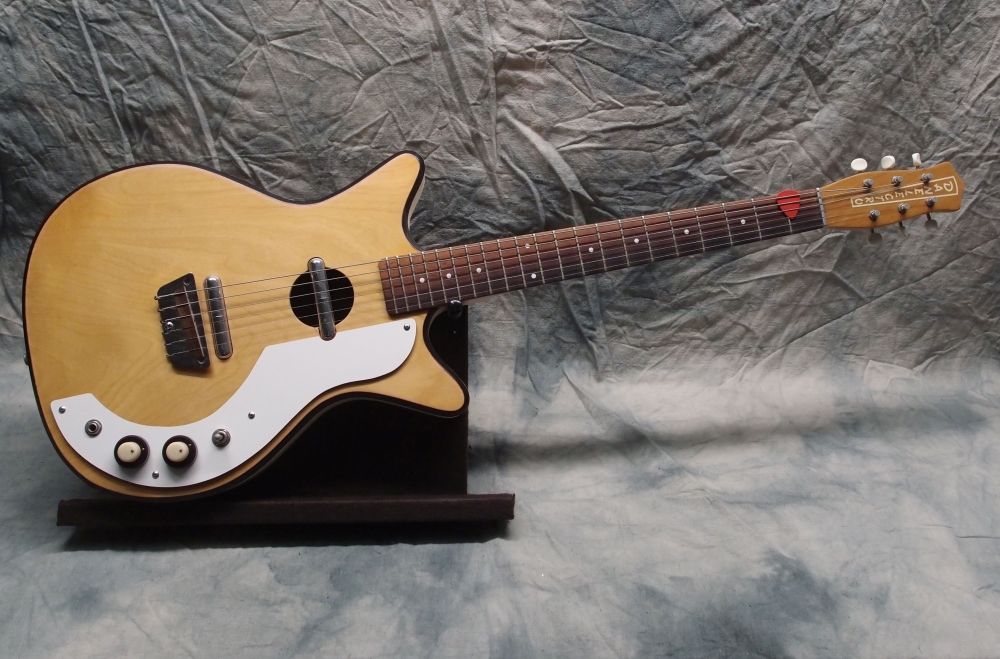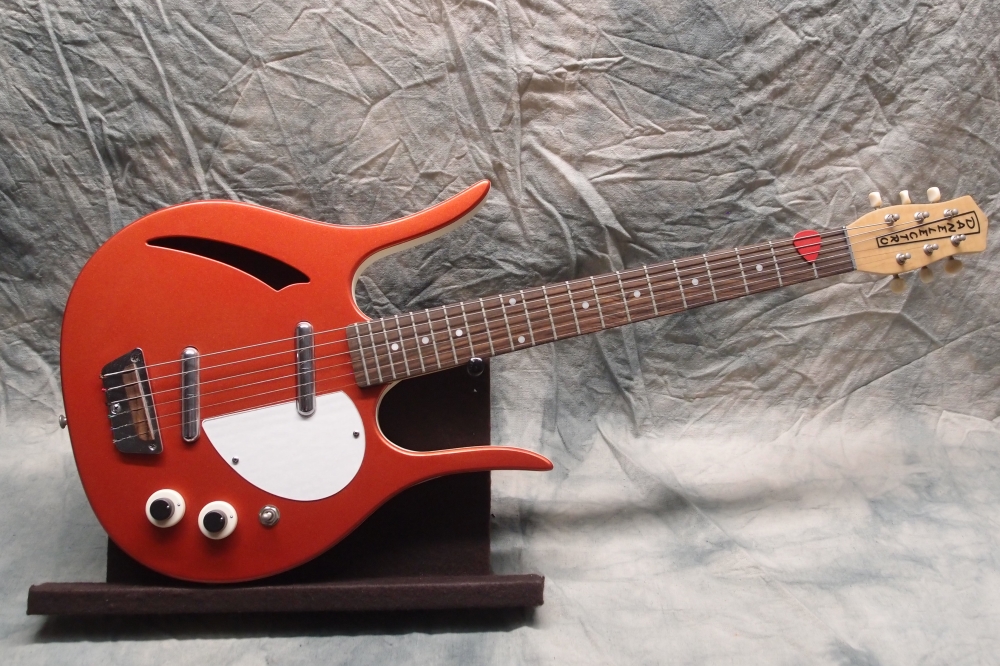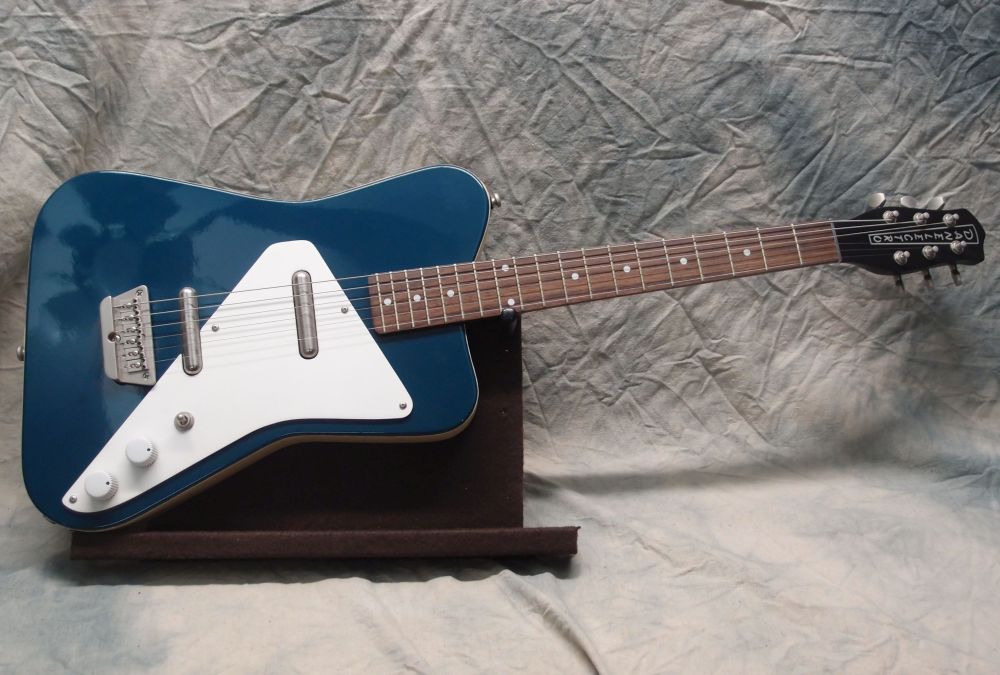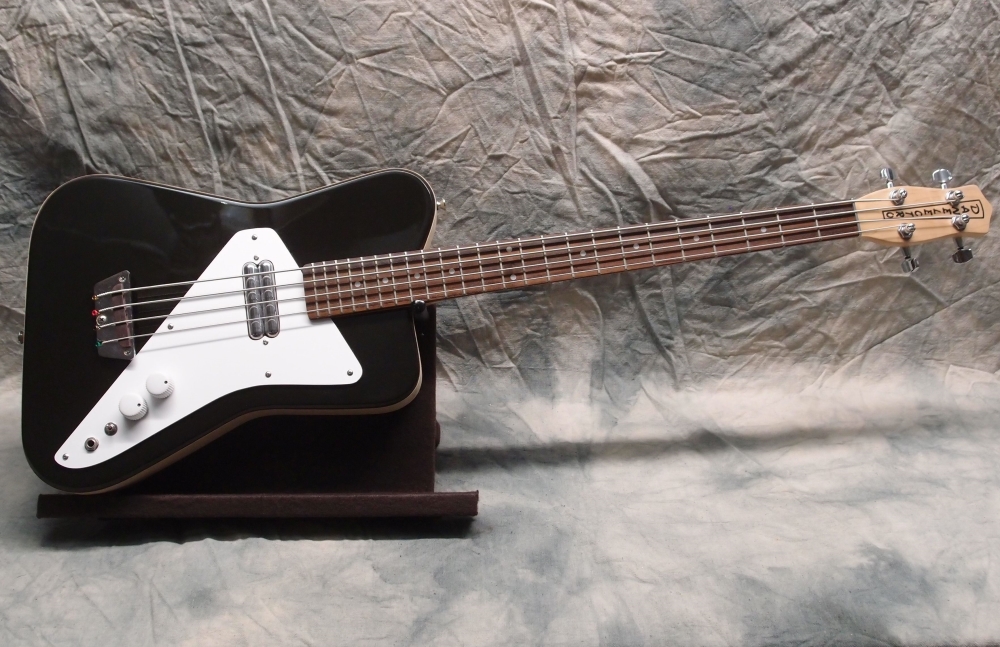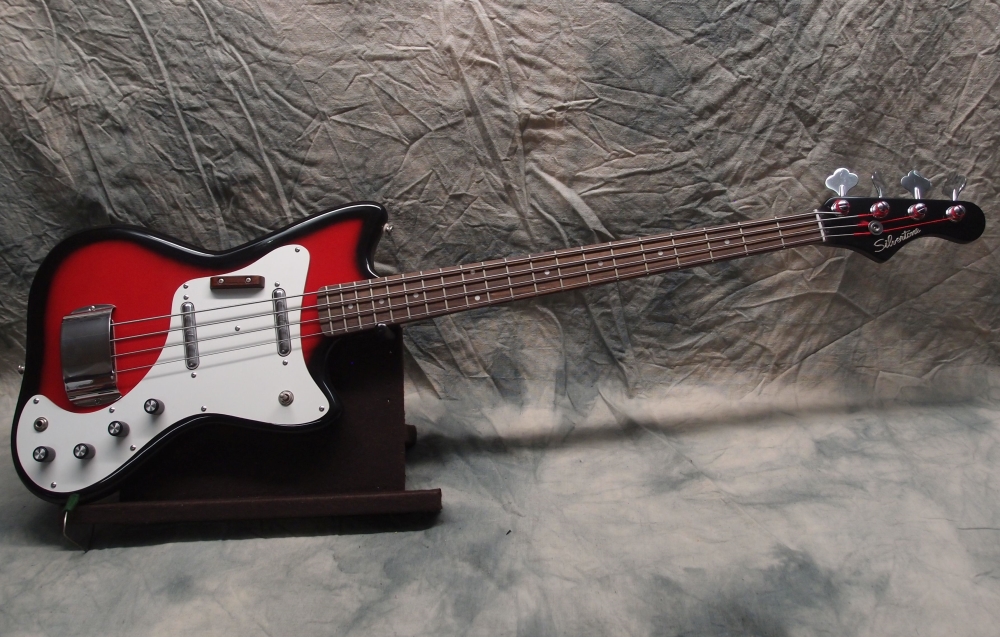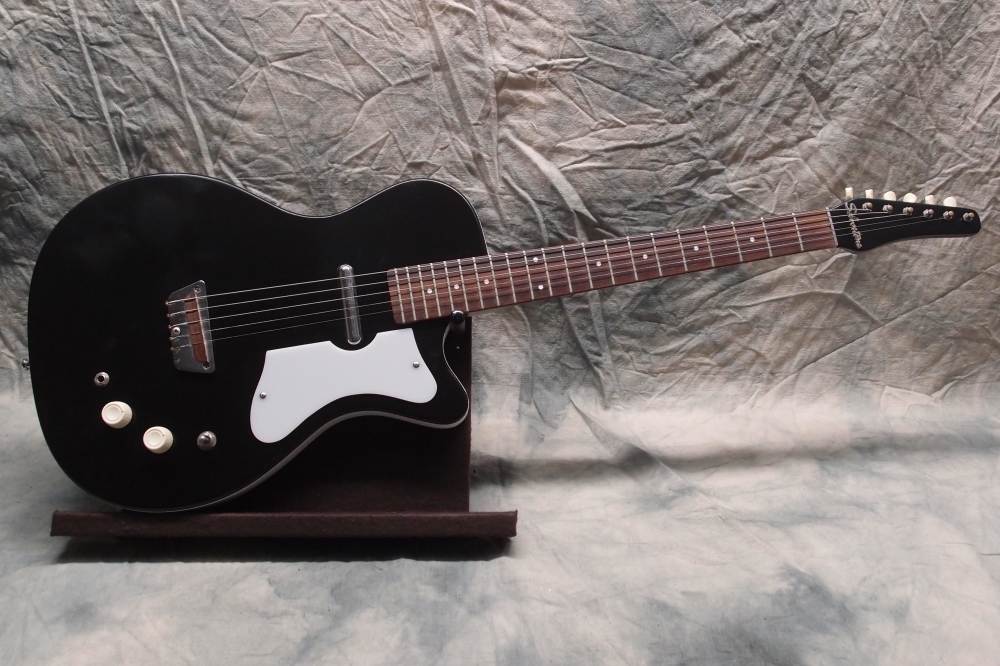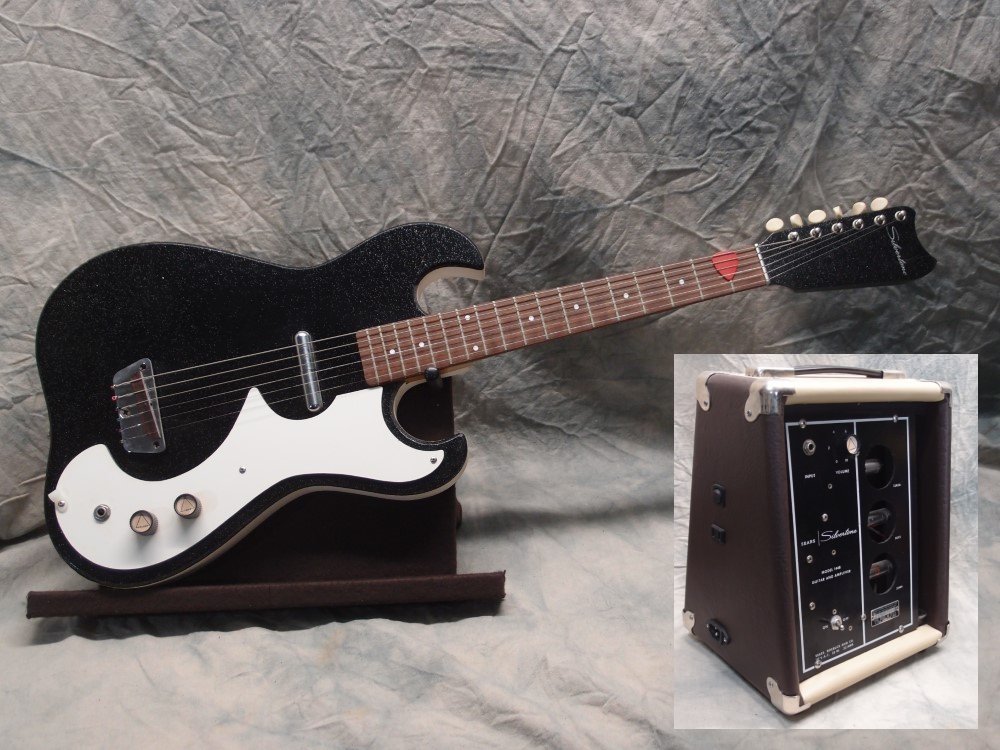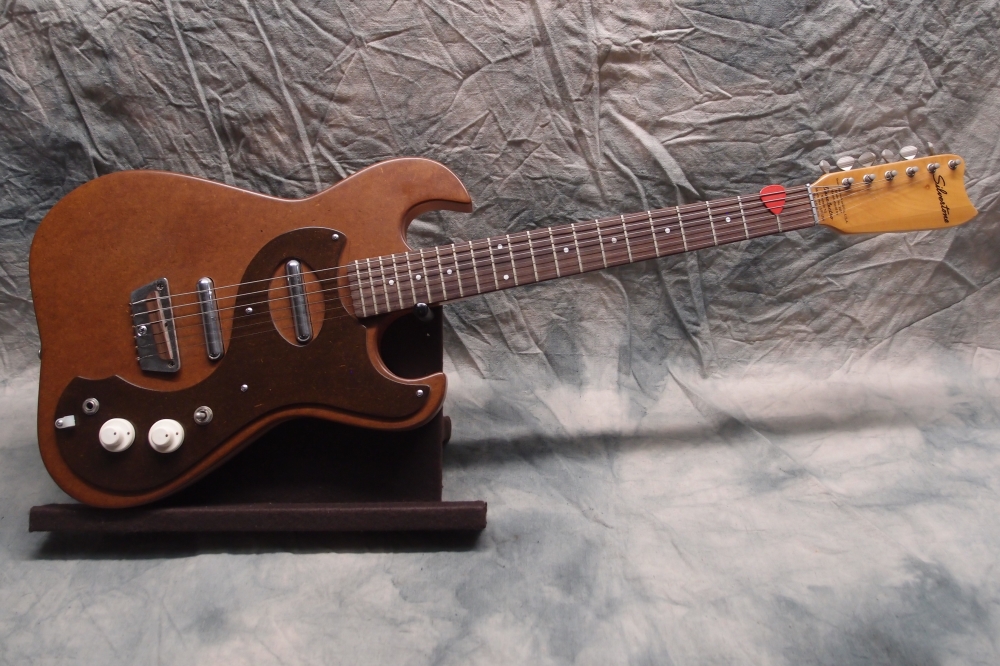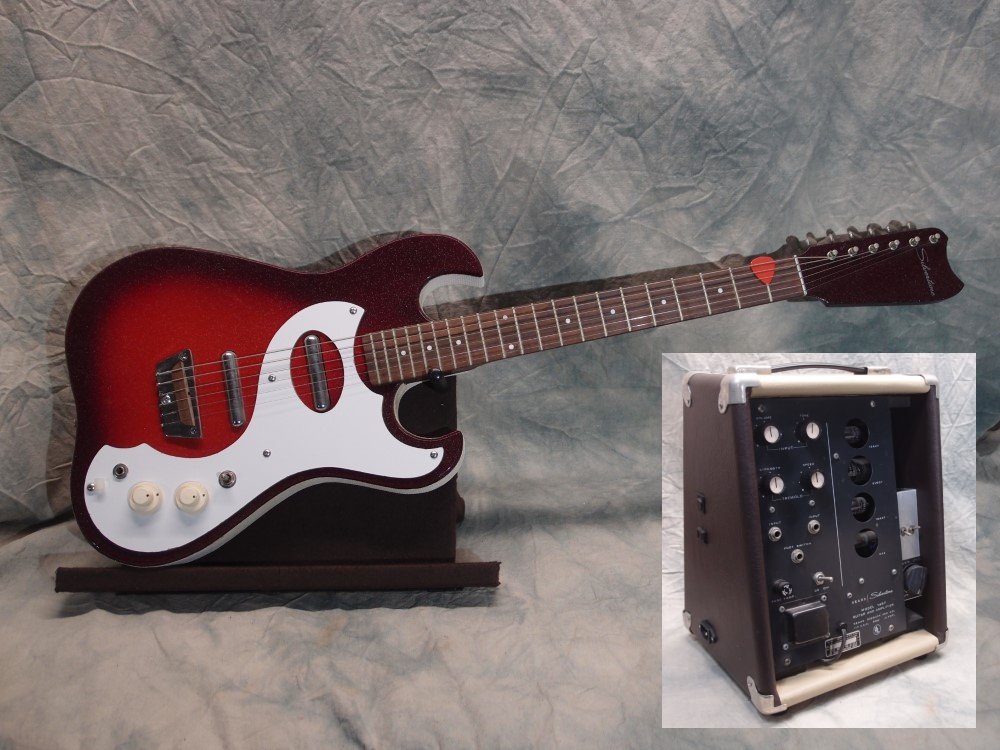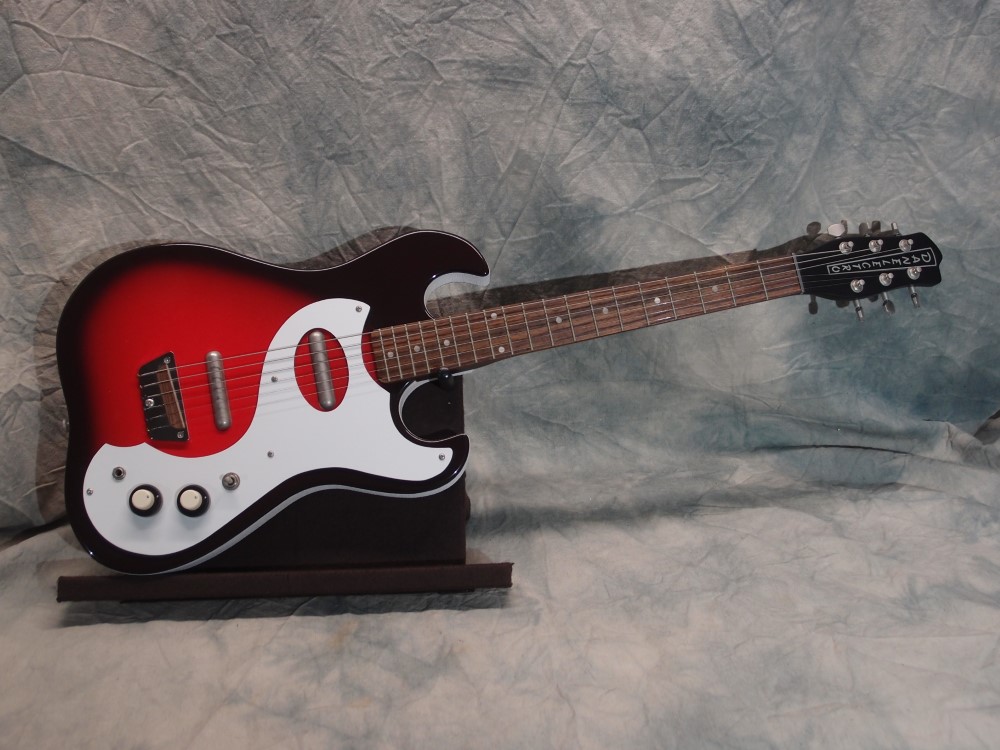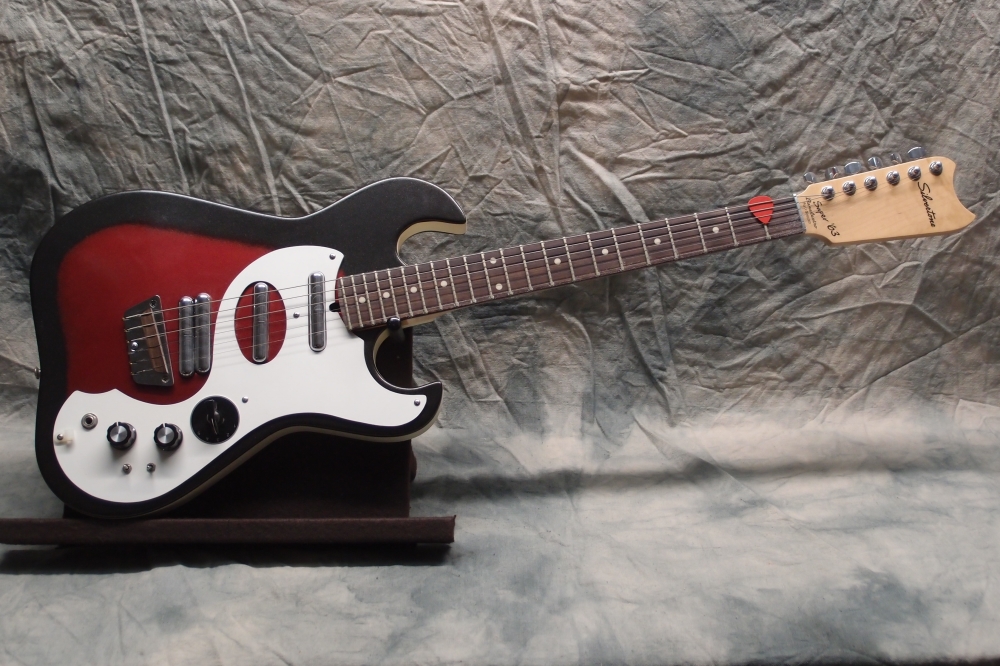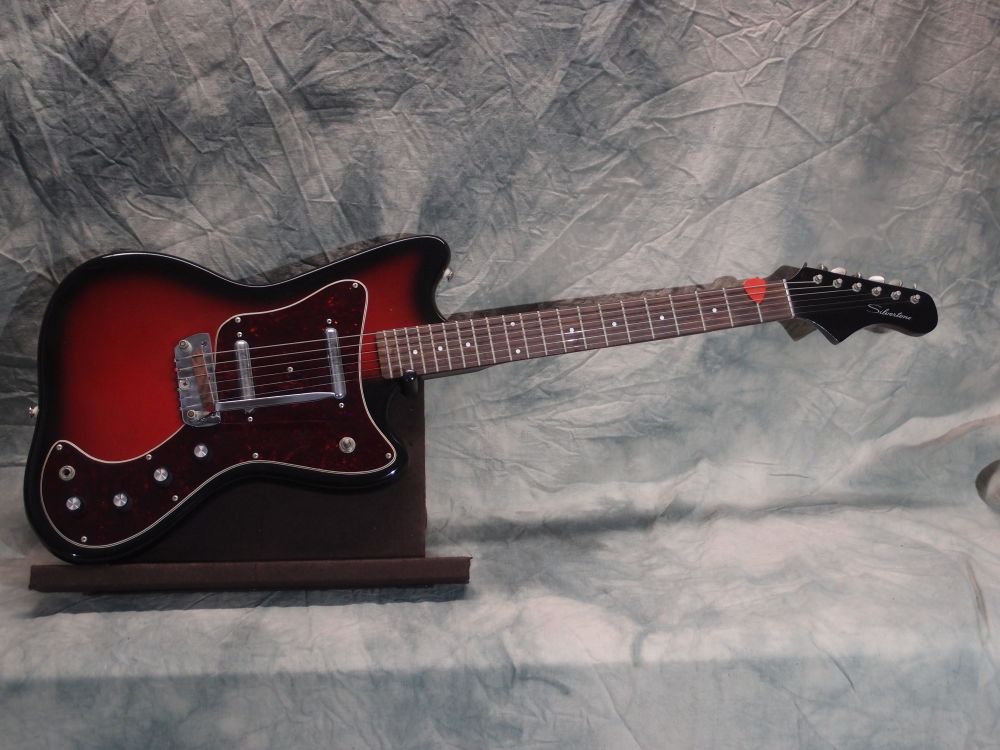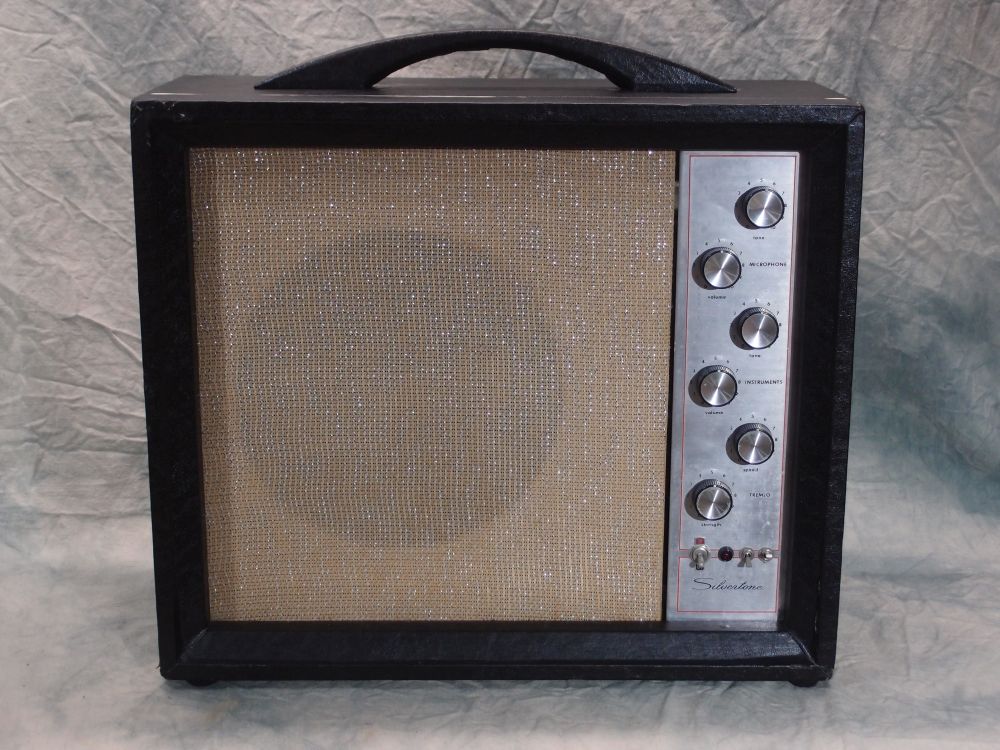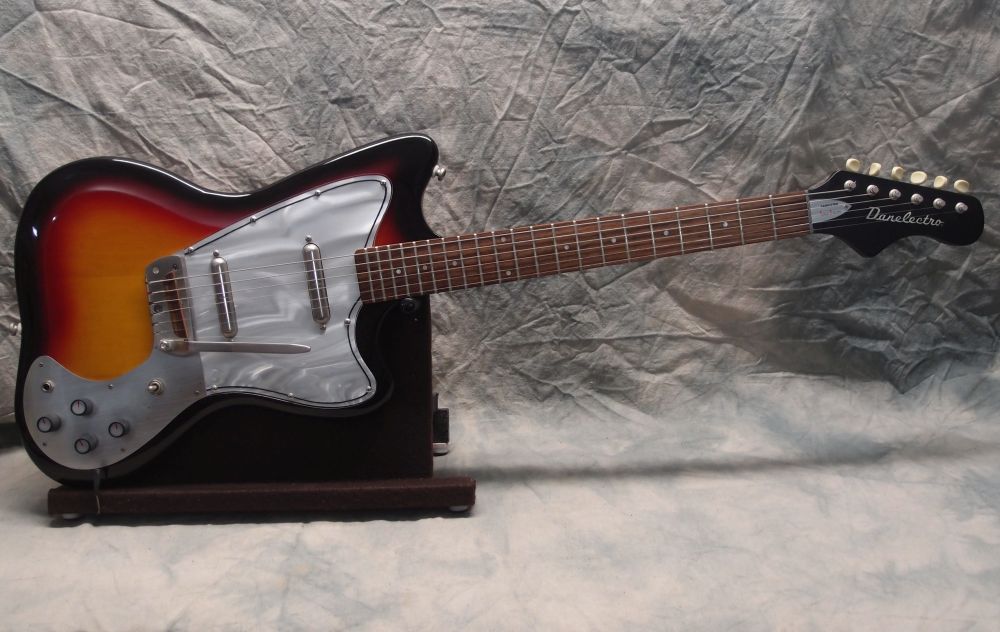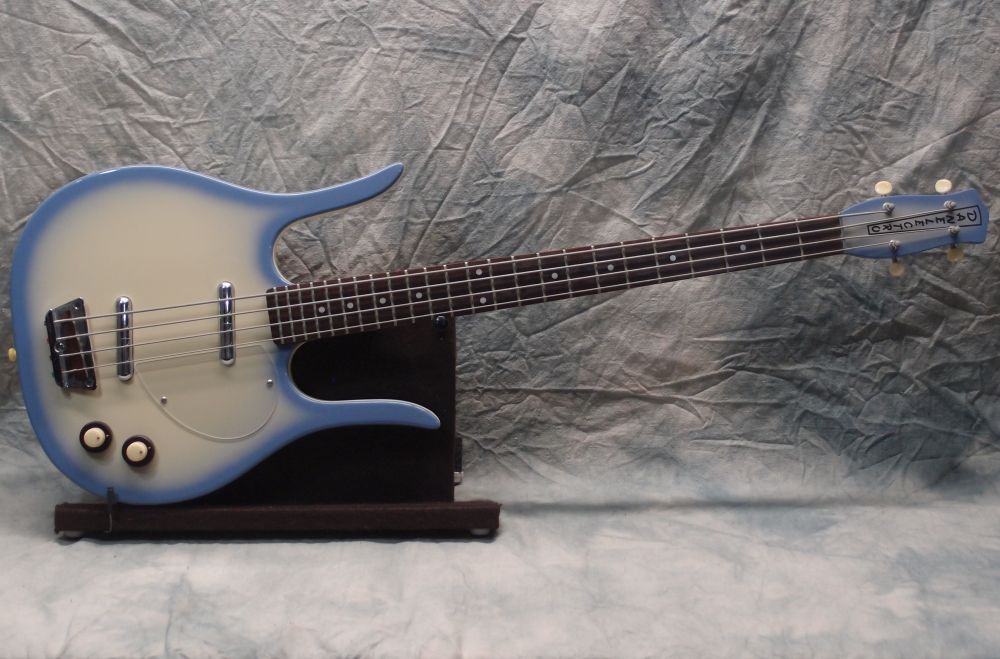Danelectro Dead-On '67 (Coral Hornet) Guitar (2/3)
One day, I took this guitar down from the rack, and was very unhappy to see how it had aged. This is what it looked like:
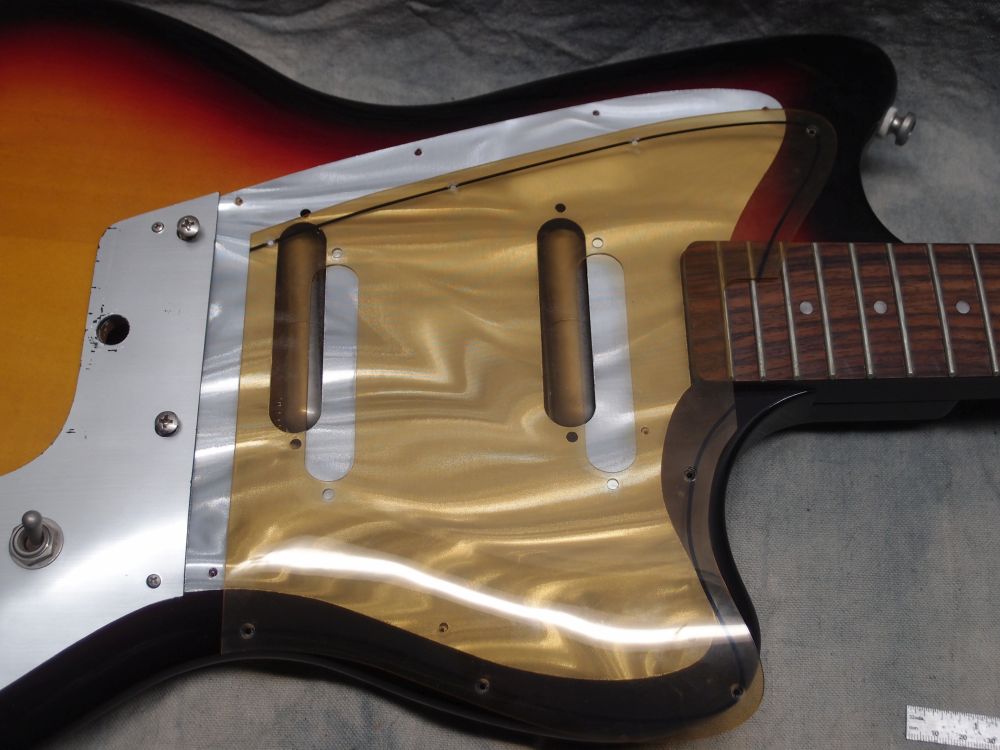
The first thing you'll notice is how the pickguard has yellowed. The pickguard is clear plastic, curved to fit the body - you can't make a replacement. * Yellowed is not the word for it, 'browned' is more accurate. This is the result of incorporating bromine in the plastic as a fire-retardant. Why does a guitar need to be fire-retardant? Not even my playing is that hot. ( Ha ha! ) This is a result of the Chinese factory using the cheapest material they could find, and either not knowing or not caring that this would happen. You can find pictures of this all over the Internets. None of my Korean-made reissues have yellowed in the least. **
* Or can you?
** Not quite true, but nothing like this.
In addition, the other part of the pickguard that holds the controls is black plastic, cheaply painted silver, and the silver paint flakes off. Mine is in better shape than most, the wear in the picture above is under the bridge and does not show. This is the kind of material you make shampoo bottles out of, not guitars! Not at any price point. I don't blame Evets for this, I'm sure they had no idea their factory in China was doing this, and it takes several years for the problem to show. It's highly likely the factory substituted inferior materials to increase profit margin, a commonplace occurrence with Chinese manufacturing. See the link in the sidebar for more on the subject of Chinese "quality".
And speaking of the bridge ...
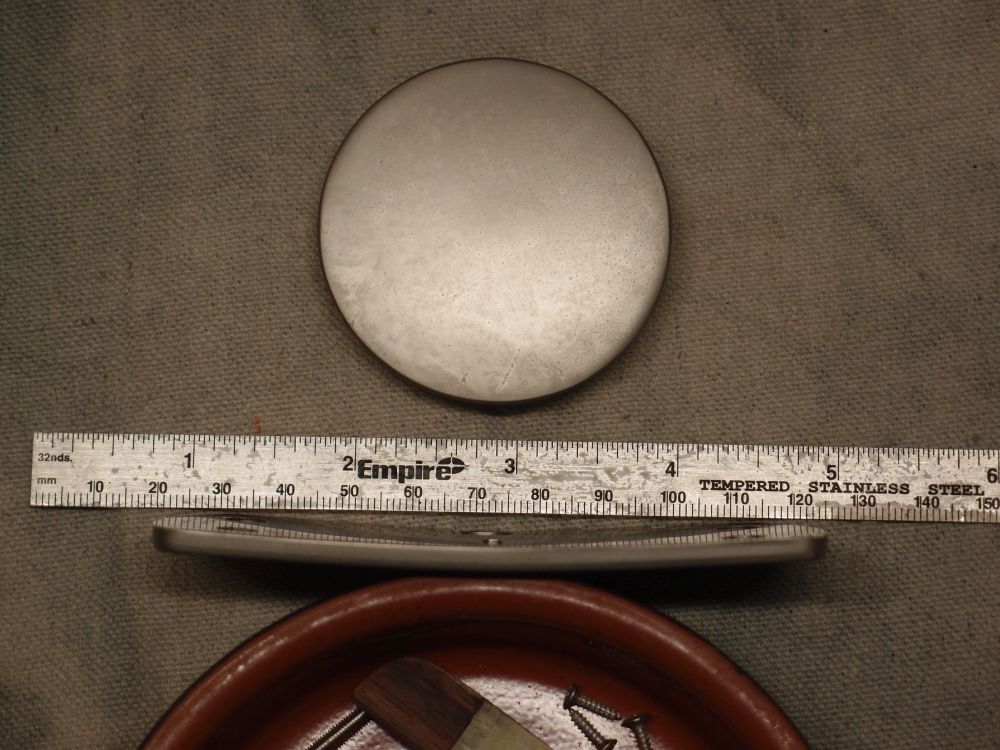
Here is an edge-on shot of the bridge plate, showing just how badly it has collapsed. Most of the Evets reissue bridges collapse to some extent, but this is incredible. That's about 2mm, measured between the edges, more like 1mm effectively. I usually deal with this by building up a shim under the rosewood saddle from masking tape, but this is going to require a washer. I don't dare try to bend it back, because that would only weaken it further. The material of the vintage bridges was chromed brass, and I have never seen one warp at all. The material of the Korean Evets '90s reissues was pot metal, and also prone to do this. But this is by far the worst I've ever seen, which proves that the Chinese have even figured out how to make inferior pot metal. I scratched it on the back, and it came up very shiny, I think it is not even pot metal, but just zinc. See my comment above.
Also, look at the back tremolo cover, specifically the finish. Yuck. That is supposed to be 'smoked chrome' or whatever name the marketing guys thought of that day. This mange is all over the guitar - the pickups, the bridge, the tuners, basically all the metal parts, and none of them look any better. Even the screw heads look like this. The only screw on the guitar that doesn't look like this is the one on the back of the bridge that holds the saddle on. I wonder if they actually sprayed that shitty dullcote on after they assembled the guitar.
The only metal part that didn't show this disease was the tremolo arm, which I had put away in a plastic bag. So apparently, the decay is caused by exposure to air. I have never seen anything like this on anything that was not made in China ( and to be fair, not all Chinese guitars are this bad, I've seen some very nice ones too. ) By this point, I was feeling kind of sick about all this, so I decided to do something about it. The first thing I did was attack the bridge with a non-metallic pot scrubber. Can't make it worse. You can see the result of that below, along with the untouched tremolo cover:
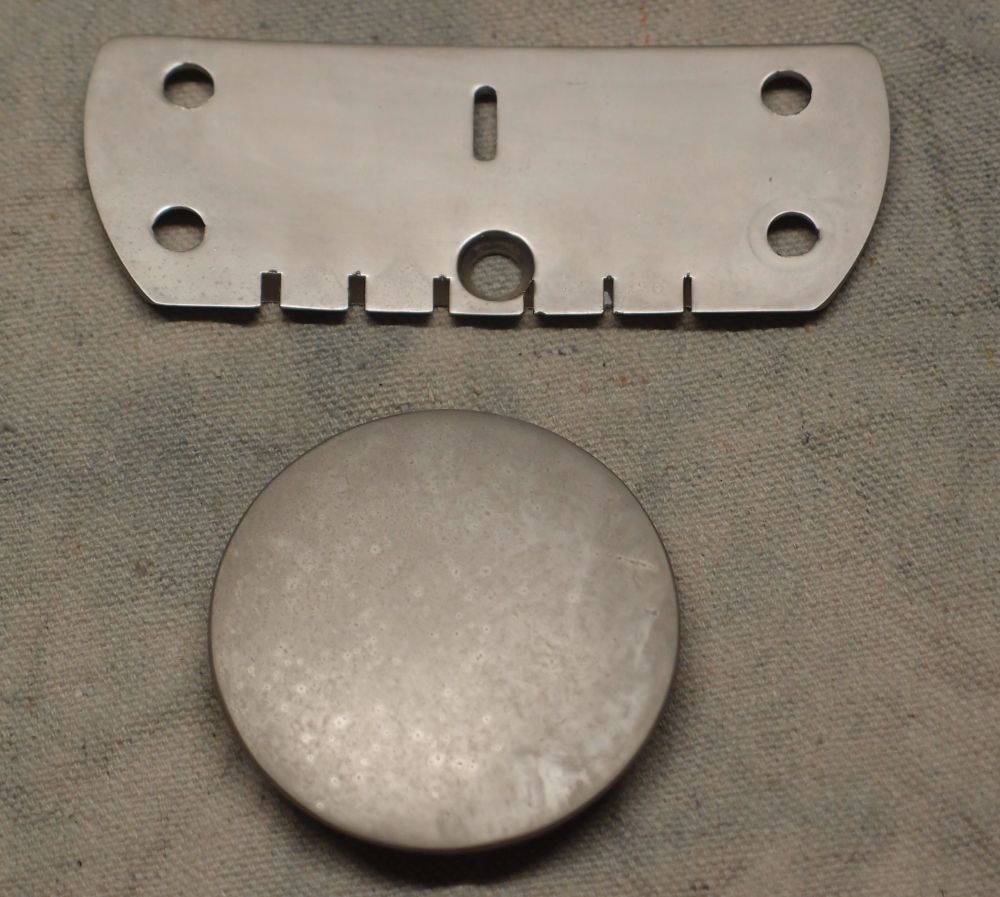
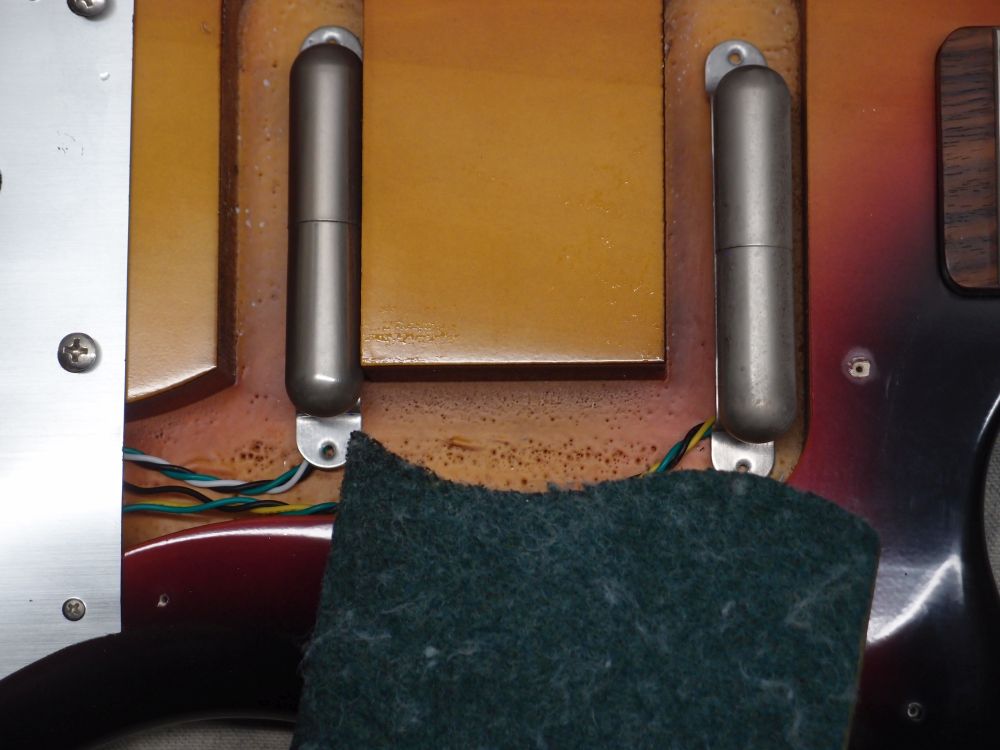
I actually have the parts to replace the pickups and bridge with nice chrome ones, and I could probably find the tremolo cover at the hardware store. But I'd rather not, and besides, then I would lose the tremolo capability, which I think I will restore. Having gotten all the metal parts looking halfway decent, it's time to address the pickguard. Fortunately, there is supposedly a way of restoring yellowed plastic, using hydrogen peroxide and sunshine.
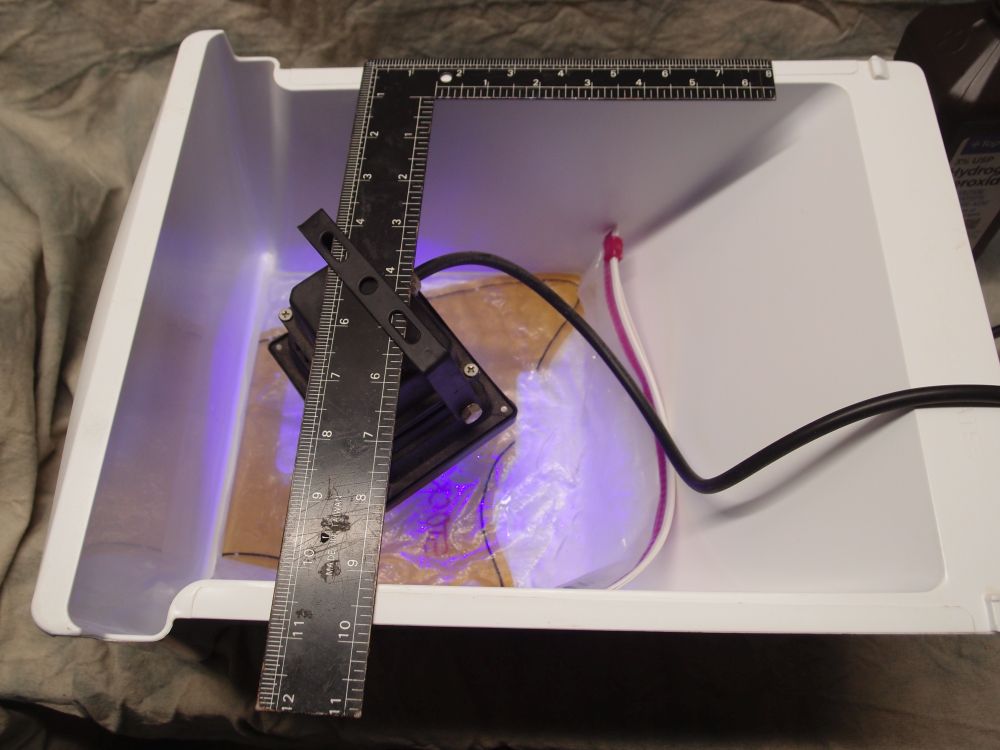
The instructions call for 12% hydrogen peroxide, but all I could get at short notice was 3%. I don't have any sunshine handy at the moment either, so I Rube Goldberg'd the setup above, using a refrigerator bin, a Ziploc bag, a ruler, and the little UV light that I have from my polyurethane experiments. I'll leave this overnight and see if it makes any difference at all. If this works, I'll see about getting some stronger peroxide. If it works really well, maybe I won't need any. Or maybe this lousy Chinese plastic dissolves instead. This guitar is turning into a restoration project, and it's not even that old.

After further experimenting with 'Retrobrite' and much stronger peroxide, I found that it has no effect whatsoever on this plastic. In fact, my experience is that it does not really work at all; I'll write that up later. So on to Plan B.

First, I made a cardboard cutout and pressed it onto the body, and it fit pretty well, so the curvature is not too extreme, there is hope. That was encouraging, so I made this quick-and-dirty copy of the contoured pickguard from a flat sheet of plastic that I salvaged from a television set. The factory pickguard is about 1/16" thick, or 0.06". This plastic is about 0.08". I screwed it down onto the body to see how well it would conform, and the result is better than I expected. The upper edge is almost perfect. The lower edge bulges a bit between the screws, but not too bad. It is lifted near the neck and bridge, but a couple of screws at those locations would solve that.
All-in-all, the flat piece fits pretty well on the curved body. That makes sense, I don't think Danelectro would have gone to the extra expense of making curved pickguards back in the '60s. For $15 I can get a big enough sheet of 1/16" clear acrylic from Home Depot to make two of these pickguards, and the thinner plastic should work even better than my test article. Then there is just the matter of the pinstripe, which I will have to think on. It is silk-screened onto the back of the part; a thin strip of black tape might do the trick, or just do without. This guitar is going to be purty again.
Looking online, this discoloration seems to be typical. Every one of these guitars that I can find for sale right now has the same brown pickguard. You could call it "Chinese Gold", but I'd call it something else. This guitar was never left in the sun, or any kind of strong light at all. This is just the result of age, and a material that should never have been used for this purpose. A plastic that turns brown with age is fine for a shampoo bottle, but really doesn't belong on something like a guitar or an automobile. The manufacturer should have known this. But Chinese manufacturers are famous for cutting corners and ignoring contracts and specs, and even if Evets specified a better plastic, it would have made no difference.
I thought about how to make that black stripe around the edge, and the answer is simple - pinstripe or chart tape, applied to the shiny under-guard. Underneath the clear over-guard, that should work fine. And here we are - Hobby Lobby $2.49.





